- europages
- >
- COMPANIES - SUPPLIERS - SERVICE PROVIDERS
- >
- plasma systems
Results for
Plasma systems - Import export
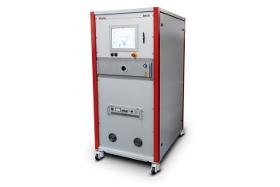
DIENER ELECTRONIC GMBH & CO. KG
Germany
Plasma systems from Diener electronic have long since established themselves in a wide range of industrial sectors. With the Tetra 45 low-pressure plasma system, you can rely on modern and future-proof cold plasma technology in a vacuum. The chamber volume of approx. 45 litres of this plasma system offers enough space to serve series production / automation. Low pressure plasma treatment is a proven technique for controlled ultra-fine cleaning, adhesion enhancement (activation and etching) and coating of thin films on substrate surfaces. Plasma is generated by applying high-frequency voltage in the vacuum chamber. In the process, the process gas introduced there is ionised. Fields of application: VOC-free cleaning of organic residues Activation before painting, gluing, potting, ... Etching of PTFE, photoresist, oxide layers, ... Super-hydrophobic and -hydrophilic coatings
Request for a quote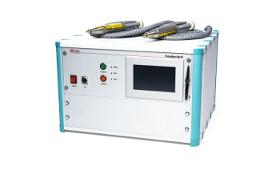
DIENER ELECTRONIC GMBH & CO. KG
Germany
Plasma systems from Diener electronic have long since established themselves in a wide variety of industrial sectors. With the PlasmaBeam DUO atmospheric pressure plasma system, you can rely on modern and future-proof plasma jet technology under atmospheric pressure. Due to the treatment width of 8 - 10 mm, substrates can be precisely treated locally. PlasmaBeam technology can be used for inline processes. With the help of robots, 2 or 3-dimensional surfaces can be treated. PlasmaBeam enables local surface cleaning without masking the rest of the surface. For example, cleaning before wire bonding and various processes in the electronics industry. Furthermore, the PlasmaBeam is suitable as a pre-treatment device for the following processes: Gluing, bonding, printing, laminating, soldering, welding, flocking. The following surfaces can be treated with PlasmaBeam: Plastics, rubber, metal, glass, ceramics, hybrid materials.
Request for a quote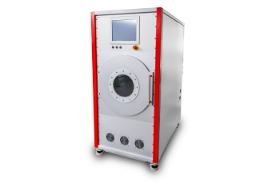
DIENER ELECTRONIC GMBH & CO. KG
Germany
Plasma systems from Diener electronic have long since established themselves in a wide range of industrial sectors. With the Tretra 320R low-pressure plasma system, you can rely on modern and future-proof cold plasma technology in a vacuum. The chamber volume of approx. 320 litres of this plasma system offers enough space to serve series production / automation. Low pressure plasma treatment is a proven technique for controlled ultra-fine cleaning, adhesion enhancement (activation and etching) and coating of thin films on substrate surfaces. Plasma is generated by applying high-frequency voltage in the vacuum chamber. In the process, the process gas introduced there is ionised. Fields of application: VOC-free cleaning of organic residues Activation before painting, gluing, potting, ... Etching of PTFE, photoresist, oxide layers, ... Super-hydrophobic and -hydrophilic coatings
Request for a quote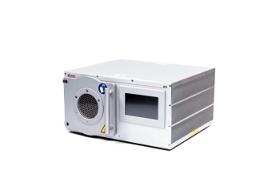
DIENER ELECTRONIC GMBH & CO. KG
Germany
Plasma systems from Diener electronic have long since established themselves in a wide range of industrial sectors. With the Atto low-pressure plasma system, you can rely on modern and future-proof cold plasma technology in a vacuum. The chamber volume of approx. 10.5 litres of this plasma system offers enough space to serve laboratory and also small series production. Low pressure plasma treatment is a proven technique for controlled ultra-fine cleaning, adhesion enhancement (activation and etching) and coating of thin films on substrate surfaces. Plasma is generated by applying high-frequency voltage in the vacuum chamber. In the process, the process gas introduced there is ionised. Fields of application: VOC-free cleaning of organic residues Activation before painting, gluing, potting, ...
Request for a quote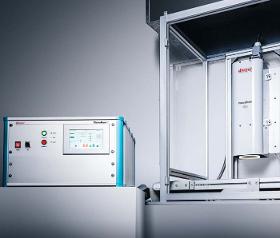
DIENER ELECTRONIC GMBH & CO. KG
Germany
Plasma systems from Diener electronic have long since established themselves in a wide variety of industrial sectors. With the atmospheric pressure plasma system PlasmaBeam RT, you can rely on modern and future-proof plasma jet technology under atmospheric pressure. Due to the treatment width of 120 mm, substrates can be treated locally with precision. With our new product, the PlasmaBeam RT, there is now the perfect solution for fast, efficient and wide in-line plasma treatment of 2D surfaces. The RT can be perfectly integrated into existing production lines and thus enables the automated cleaning and activation of various components and web-shaped materials. We create the possibility of up to 120 mm wide plasma treatment, with the usual consistent quality and effectiveness of atmospheric pressure plasma systems from Diener electronic.
Request for a quote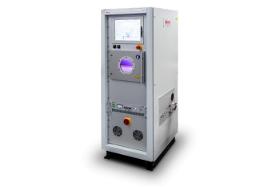
DIENER ELECTRONIC GMBH & CO. KG
Germany
Plasma systems from Diener electronic have long since established themselves in a wide range of industrial sectors. With the Tetra 30 low-pressure plasma system, you can rely on modern and future-proof cold plasma technology in a vacuum. The chamber volume of 34 up to 50 litres of this plasma system offers enough space to serve series production / automation. Low pressure plasma treatment is a proven technique for controlled ultra-fine cleaning, adhesion enhancement (activation and etching) and coating of thin films on substrate surfaces. Plasma is generated by applying high-frequency voltage in the vacuum chamber. In the process, the process gas introduced there is ionised. Fields of application: VOC-free cleaning of organic residues Activation before painting, gluing, potting, ... Etching of PTFE, photoresist, oxide layers, ... Super-hydrophobic and -hydrophilic coatings
Request for a quote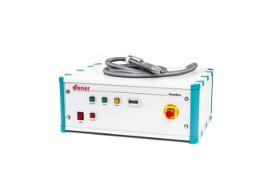
DIENER ELECTRONIC GMBH & CO. KG
Germany
Plasma systems from Diener electronic have long since established themselves in a wide variety of industrial sectors. With the PlasmaBeam atmospheric pressure plasma system, you can rely on modern and future-proof plasma jet technology under atmospheric pressure. Due to the treatment width of 8 - 10 mm, substrates can be precisely treated locally. PlasmaBeam technology can be used for inline processes. With the help of robots, 2 or 3-dimensional surfaces can be treated. PlasmaBeam enables local surface cleaning without masking the rest of the surface. For example, cleaning before wire bonding and various processes in the electronics industry. Furthermore, the PlasmaBeam is suitable as a pre-treatment device for the following processes: Gluing, bonding, printing, laminating, soldering, welding, flocking. The following surfaces can be treated with PlasmaBeam: Plastics, rubber, metal, glass, ceramics, hybrid materials.
Request for a quote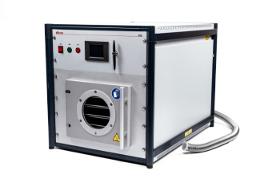
DIENER ELECTRONIC GMBH & CO. KG
Germany
Plasma systems from Diener electronic have long since established themselves in a wide range of industrial sectors. With the Nano low-pressure plasma system, you can rely on modern and future-proof cold plasma technology in a vacuum. The chamber volume of 18 up to 24 litres of this plasma system offers enough space to serve laboratory and also series production. Plasma treatment in low-pressure plasma is a proven technique for controlled ultra-fine cleaning, improvement of adhesion (activation and etching) and coating of thin layers on substrate surfaces. Plasma is generated by applying high-frequency voltage in the vacuum chamber. In the process, the process gas introduced there is ionised. Fields of application: VOC-free cleaning of organic residues. Activation before painting, gluing, potting, ... Etching of PTFE, photoresist, oxide layers, ... Super-hydrophobic and -hydrophilic coatings
Request for a quote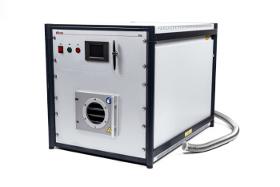
DIENER ELECTRONIC GMBH & CO. KG
Germany
Plasma systems from Diener electronic have long since established themselves in a wide range of industrial sectors. With the Pico low-pressure plasma system, you can rely on modern and future-proof cold plasma technology in a vacuum. The chamber volume of 5 up to 8 litres of this plasma system offers enough space to serve laboratory and also series production. Low pressure plasma treatment is a proven technique for controlled ultra-fine cleaning, adhesion enhancement (activation and etching) and coating of thin films on substrate surfaces. Plasma is generated by applying high-frequency voltage in the vacuum chamber. In the process, the process gas introduced there is ionised. Fields of application: VOC-free cleaning of organic residues Activation before painting, gluing, potting, ... Etching of PTFE, photoresist, oxide layers, ... Super-hydrophobic and -hydrophilic coatings
Request for a quote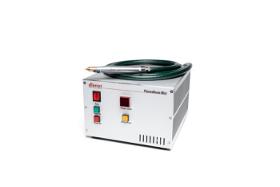
DIENER ELECTRONIC GMBH & CO. KG
Germany
Plasma systems from Diener electronic have long since established themselves in a wide variety of industrial sectors. With the atmospheric pressure plasma system PlasmaBeam Mini, you can rely on modern and future-proof plasma jet technology under atmospheric pressure. Due to the treatment width of 3 - 5 mm, substrates can be treated locally with precision. In contrast to the Plasmabeam devices, the PlasmaBeam Mini is designed for laboratory use. The PlasmaBeam technology enables local surface cleaning without masking the rest of the surface. For example, cleaning before wire bonding and various processes in the electronics industry. Furthermore, the PlasmaBeam is suitable as a pre-treatment device for the following processes: Gluing, bonding, printing, laminating, soldering, welding, flocking. The following surfaces can be treated with PlasmaBeam: Plastics, rubber, metal, glass, ceramics, hybrid materials.
Request for a quote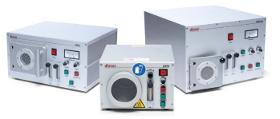
DIENER ELECTRONIC GMBH & CO. KG
Germany
Plasma systems from Diener electronic have long since established themselves in a wide range of industrial sectors. With the Zepto low-pressure plasma system, you can rely on modern and future-proof cold plasma technology in a vacuum. The chamber volume of approx. 1 - 4 litres of this plasma system offers enough space to serve laboratory and small series production. Low pressure plasma treatment is a proven technique for controlled ultra-fine cleaning, adhesion enhancement (activation and etching) and coating of thin films on substrate surfaces. Plasma is generated by applying high-frequency voltage in the vacuum chamber. In the process, the process gas introduced there is ionised. Fields of application: VOC-free cleaning of organic residues Activation before painting, gluing, potting, ...
Request for a quote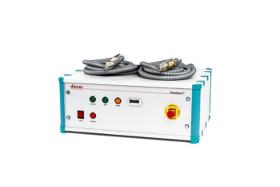
DIENER ELECTRONIC GMBH & CO. KG
Germany
Plasma systems from Diener electronic have long since established themselves in a wide variety of industrial sectors. With the PlasmaBeam DUO atmospheric pressure plasma system, you can rely on modern and future-proof plasma jet technology under atmospheric pressure. Due to the treatment width of 8 - 10 mm, substrates can be precisely treated locally. PlasmaBeam technology can be used for inline processes. With the help of robots, 2 or 3-dimensional surfaces can be treated. PlasmaBeam enables local surface cleaning without masking the rest of the surface. For example, cleaning before wire bonding and various processes in the electronics industry. Furthermore, the PlasmaBeam is suitable as a pre-treatment device for the following processes: Gluing, bonding, printing, laminating, soldering, welding, flocking. The following surfaces can be treated with PlasmaBeam: Plastics, rubber, metal, glass, ceramics, hybrid materials.
Request for a quote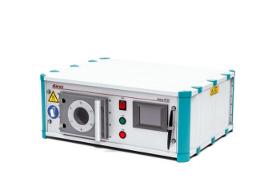
DIENER ELECTRONIC GMBH & CO. KG
Germany
Plasma systems from Diener electronic have long since established themselves in a wide range of industrial sectors. With the Femto low-pressure plasma system, you can rely on modern and future-proof cold plasma technology in a vacuum. The chamber volume of 2 to 3 litres of this plasma system offers enough space to serve laboratory and small series production. Low pressure plasma treatment is a proven technique for controlled ultra-fine cleaning, adhesion enhancement (activation and etching) and coating of thin films on substrate surfaces. Plasma is generated by applying high-frequency voltage in the vacuum chamber. In the process, the process gas introduced there is ionised. Fields of application: VOC-free cleaning of organic residues Activation before painting, gluing, potting, ... Etching of PTFE, photoresist, oxide layers, ... Super-hydrophobic and -hydrophilic coatings
Request for a quote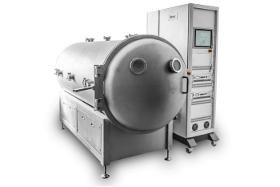
DIENER ELECTRONIC GMBH & CO. KG
Germany
Plasma systems from Diener electronic have long since established themselves in a wide range of industrial sectors. With the Tetra 2800 low-pressure plasma system, you can rely on modern and future-proof cold plasma technology in a vacuum. The chamber volume of approx. 2800 litres of this plasma system offers enough space to serve series production. Low pressure plasma treatment is a proven technique for controlled ultra-fine cleaning, adhesion enhancement (activation and etching) and coating of thin films on substrate surfaces. Plasma is generated by applying high-frequency voltage in the vacuum chamber. In the process, the process gas introduced there is ionised. Fields of application: VOC-free cleaning of organic residues Activation before painting, gluing, potting, ... Etching of PTFE, photoresist, oxide layers, ... Super-hydrophobic and -hydrophilic coatings
Request for a quote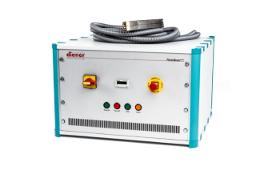
DIENER ELECTRONIC GMBH & CO. KG
Germany
Plasma systems from Diener electronic have long since established themselves in a wide variety of industrial sectors. With the PlasmaBeam QUATTRO atmospheric pressure plasma system, you can rely on modern and future-proof plasma jet technology under atmospheric pressure. Due to the treatment width of 8 - 10 mm, substrates can be precisely treated locally. PlasmaBeam technology can be used for inline processes. With the help of robots, 2 or 3-dimensional surfaces can be treated. PlasmaBeam enables local surface cleaning without masking the rest of the surface. For example, cleaning before wire bonding and various processes in the electronics industry. Furthermore, the PlasmaBeam QUATTRO is suitable as a pre-treatment device for the following processes: Gluing, bonding, printing, laminating, soldering, welding, flocking. The following surfaces can be treated with PlasmaBeam: Plastics, rubber, metal, glass, ceramics, hybrid materials.
Request for a quote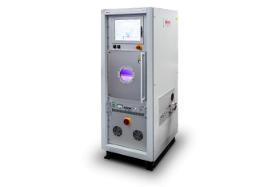
DIENER ELECTRONIC GMBH & CO. KG
Germany
Plasma systems from Diener electronic have long since established themselves in a wide range of industrial sectors. With the Tetra 100 low-pressure plasma system, you can rely on modern and future-proof cold plasma technology in a vacuum. The chamber volume of approx. 100 litres of this plasma system offers enough space to serve series production / automation. Low pressure plasma treatment is a proven technique for controlled ultra-fine cleaning, adhesion enhancement (activation and etching) and coating of thin films on substrate surfaces. Plasma is generated by applying high-frequency voltage in the vacuum chamber. In the process, the process gas introduced there is ionised. Fields of application: VOC-free cleaning of organic residues Activation before painting, gluing, potting, ... Etching of PTFE, photoresist, oxide layers, ... Super-hydrophobic and -hydrophilic coatings
Request for a quote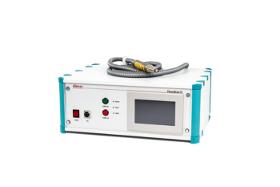
DIENER ELECTRONIC GMBH & CO. KG
Germany
Plasma systems from Diener electronic have long since established themselves in a wide variety of industrial sectors. With the PlasmaBeam PC atmospheric pressure plasma system, you can rely on modern and future-proof plasma jet technology under atmospheric pressure. Due to the treatment width of 8 - 10 mm, substrates can be precisely treated locally. PlasmaBeam technology can be used for inline processes. With the help of robots, 2 or 3-dimensional surfaces can be treated. PlasmaBeam enables local surface cleaning without masking the rest of the surface. For example, cleaning before wire bonding and various processes in the electronics industry. Furthermore, the PlasmaBeam PC is suitable as a pre-treatment device for the following processes: Gluing, bonding, printing, laminating, soldering, welding, flocking. The following surfaces can be treated with PlasmaBeam: Plastics, rubber, metal, glass, ceramics, hybrid materials.
Request for a quoteDo you sell or make similar products?
Sign up to europages and have your products listed

DIENER ELECTRONIC GMBH & CO. KG
Germany
Plasma systems from Diener electronic have long since established themselves in a wide range of industrial sectors. With the Tetra 1440 low-pressure plasma system, you can rely on modern and future-proof cold plasma technology in a vacuum. The chamber volume of approx. 1440 litres of this plasma system offers enough space to serve series production. Low pressure plasma treatment is a proven technique for controlled ultra-fine cleaning, adhesion enhancement (activation and etching) and coating of thin films on substrate surfaces. Plasma is generated by applying high-frequency voltage in the vacuum chamber. In the process, the process gas introduced there is ionised. Fields of application: VOC-free cleaning of organic residues Activation before painting, gluing, potting, ... Etching of PTFE, photoresist, oxide layers, ... Super-hydrophobic and -hydrophilic coatings
Request for a quote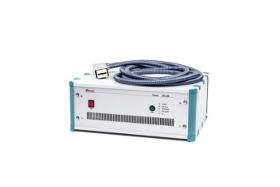
DIENER ELECTRONIC GMBH & CO. KG
Germany
A cost-effective process for activating plastic and elastomer surfaces is treatment with the APC500. Using air as the process gas, large surfaces can be activated under atmospheric pressure. An arc is ignited between two electrodes in an inhomogeneous field. The voltage is about 10,000 V. In the discharge zone, the air flowing through is ionised. The plasma is blown out of the electrode area by the air flow. The substrate can now be treated in the emerging corona. A strip several centimetres wide is treated in the corona. With several parallel plasma generators it is possible to treat surfaces. Due to dangerous voltage potential, PlasmaAPC 500 is only suitable for non-conductive materials. PlasmaAPC 500 is suitable as a pre-treatment unit for the following processes: Bonding, printing, painting. The following surfaces can be treated with PlasmaAPC 500: Plastics, rubber, ceramics, glass.
Request for a quote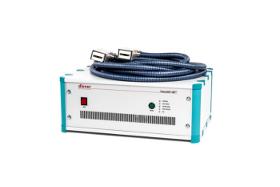
DIENER ELECTRONIC GMBH & CO. KG
Germany
A cost-effective process for activating plastic and elastomer surfaces is treatment with the PlasmaAPC 500 DUO. Using air as the process gas, large surfaces can be activated under atmospheric pressure. An arc is ignited between two electrodes in an inhomogeneous field. The voltage is about 10,000 V. In the discharge zone, the air flowing through is ionised. The plasma is blown out of the electrode area by the air flow. The substrate can now be treated in the emerging corona. A strip several centimetres wide is treated in the corona. With several parallel plasma generators it is possible to treat surfaces. Due to dangerous voltage potential, PlasmaAPC 500 DUO is only suitable for non-conductive materials. PlasmaAPC 500 DUO is suitable as a pre-treatment unit for the following processes: Bonding, printing, painting. The following surfaces can be treated with PlasmaAPC 500 DUO: Plastics, rubber, ceramics, glass.
Request for a quote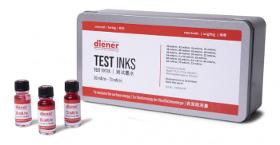
DIENER ELECTRONIC GMBH & CO. KG
Germany
A prerequisite for the adhesion of an adhesive or coating to a surface is wetting. For wetting to take place, the surface energy of the substrate must be greater than that of the coating. In particular, very many plastics have a very small surface energy and are correspondingly difficult to bond. Often the aim of a plasma treatment is to make a surface wettable and bondable. The wettability can easily be tested with test inks. Diener electronic supplies a test ink set with 8 liquids with surface tensions between 30 and 73 (105) mN/m suitable for most practical applications. There is also a set of 23 test inks, with additional gradations between 30 and 73 (105) mN/m.
Request for a quote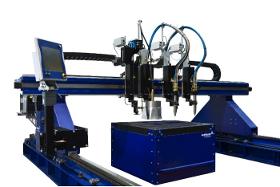
MESSER CUTTING SYSTEMS GMBH
Germany
Do you need a compact machine which is flexible and easy to use for your daily work? The MultiTherm® Eco is the perfect universal machine for oxyfuel and plasma cutting. Efficient cutting productivity due to a high level of automation and easy set-up and operation produces quality components - quickly and efficiently.
Request for a quote
BIEGLO GMBH
Germany
BIEGLO offers finished or semi-finished parts directly formed from polyimide powder with all the attributes of sintered PI. The advantage of direct formed parts are the lower costs as quantitiy is increasing. Due to almost zero percent waste during production it can be a more economic production method. Machined parts are widely used for small series high precision applications. Polyimide direct formed parts can be used in different applications: Automotive industry: racing engine fuel line. Jet engine: vane bushing or lock nut insert. Industrial machinery: hotrunner systems nozzles or plasma cutting torch as gas distributers or sealing components. Semicon HDPCVD Equipment: e.g. heater coil spacer. Life sciences: rotor seal or pneumatic surgical tool vane.
Request for a quote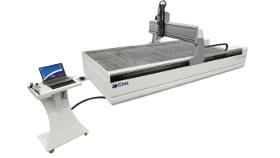
SELMACH MACHINERY LTD
United Kingdom
The Italian CMS Waterjet system is capable of cutting a wide variety of materials such as Metal, Plastic, Glass and Stone, using a very high-pressure waterjet and abrasive mineral. Waterjet cutting is one of the fastest growing cutting processes around the globe and is used across many engineering and fabrication sectors. It is the preferred method for cutting materials that are sensitive to high temperatures generated by other methods such as laser and plasma systems.
Request for a quote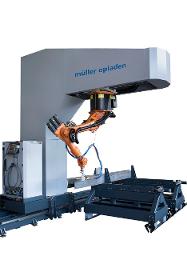
SELMACH MACHINERY LTD
United Kingdom
Müller Opladen Gmbh have been manufacturing tube and pipe profiling machines since the 1950s. The MO ROBO is their 3D Robotic plasma cutting machine for coping and profiling structural steel and is capable of processing a huge range of sizes. The machine integrates a 6 or 8 axis Kuka robot for high accuracy cutting of H-Beam, I-Beam, T-Section, U-Channel and L-Angles. The standard machine is equipped with a 12 meter infeed and length measuring conveyor, the robotic cell and a 12 meter outfeed conveyor. This machine cuts using plasma with the option of both Kjellberg and Hypertherm plasma systems.
Request for a quote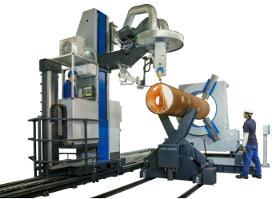
SELMACH MACHINERY LTD
United Kingdom
Müller Opladen Gmbh have been manufacturing tube and pipe profiling machines since the 1950s. Over the years they have developed machines that offer 3D cutting of pipes and tubes, covering pipe diameters from 50 to 4064 mm ( 2” to 160”). The pipe profiling and vessel profiling models have a minimum of 6 CNC axes, where 4 axis are required for cutting and the 5th and 6th axis are used for adapting to deviations in the outer pipe diameter. With CAD-CAM integration software CAD files can be uploaded from the office and sent to the machine for profile cutting. Their 3D cutting processes are oxyfuel cutting or plasma cutting and they work with Hypertherm and Kjellberg for their conventional and high definition plasma systems.
Request for a quote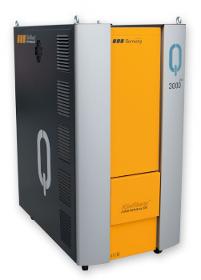
KJELLBERG VERTRIEB GMBH
Germany
The plasma cutting machines Q 3000 and Q 3000 plus combine precise, highest-level plasma cutting and marking with a maximum cutting current of 300A. Thanks to the modular design, the machine performance of the Q 3000 plus can later be upgraded and, thus, adapted to the customer's requirements. The specially developed browser-based operator interface Q-Desk provides real-time process data and information of all plant components on any standard device and location-independent. The user benefits from extensive information enabling him to plan and execute a variety of maintenance tasks as guided by the system. This generation of plasma cutting systems is the result of intensive research and development work by Kjellberg and a landmark in the 60 years of Kjellberg's plasma history. The new digital plasma series Q sets pioneering standards regarding quality and connectivity.
Request for a quote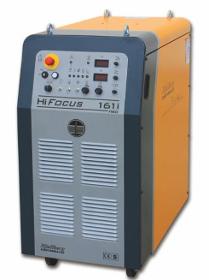
KJELLBERG VERTRIEB GMBH
Germany
The HiFocus 161i neo is the latest high-precision plasma cutting system for the cutting range between 0.5 mm and 50 mm. Equipped with the soft-switch inverter technology, it offers a wide range of possibilities for cutting and marking thin and medium-sized sheets. It meets the requirements of the metal and container construction industries, the engineering and automotive industries and many other sectors. The HiFocus 161i neo can be combined with 2D as well as 3D CNC-controlled guiding systems, i.e. gas cutting systems, robots and pipe cutting systems.
Request for a quote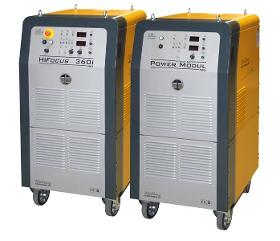
KJELLBERG VERTRIEB GMBH
Germany
The plasma cutting system HiFocus 600i neo sets new standards for plasma cutting: materials with a thickness from 0.5 to 160 mm can be cut precisely. Furthermore the system is suited for marking, bevel and underwater cutting. Consisting of two power sources (HiFocus 360i neo, power module HiFocus 600i neo) the system achieves a maximum cutting current of 600 A and can be adapted to guiding systems. With HiFocus neo the user benefits, compared to competitors, from higher speed when cutting and marking electrically conductive materials, ensuring at the same time excellent quality and low process costs. Thanks to the optimised technology, the consumables are handled gently and the plasma cutting process is more efficient. The plasma cutting system HiFocus 600i neo uses the approved Contour Cut technology for cutting contours, holes and webs fast and precisely in mild steel.
Request for a quoteResults for
Plasma systems - Import exportNumber of results
34 ProductsCountries
Company type